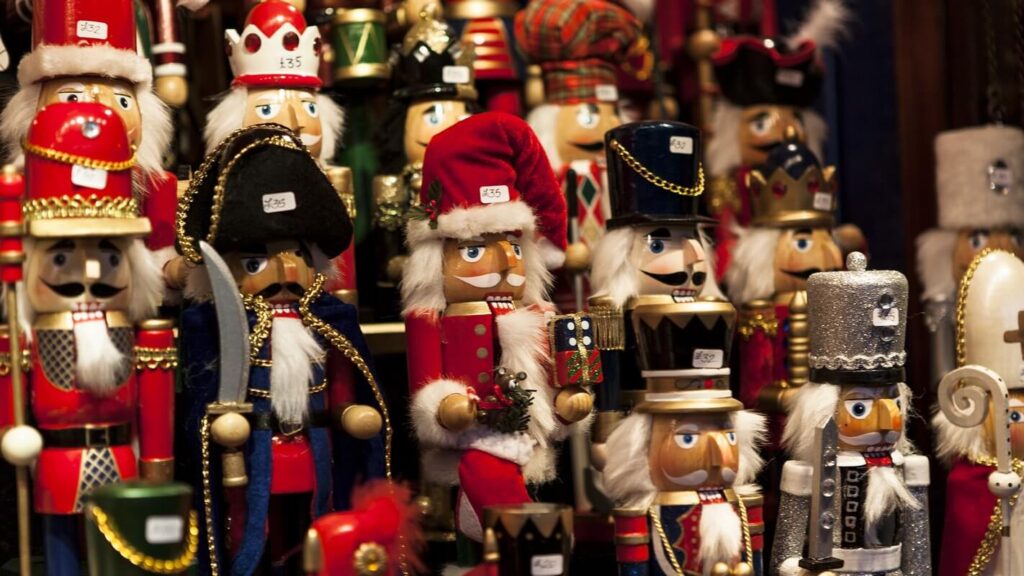Simple Christmas treats of oranges and nuts thrilled children throughout history, and the remnants of those traditions are still with us in decorative Nutcrackers.
Nutcracker historians say Aristotle possessed one around 330 B.C., but the wooden standing-man versions were first seen in the Erzgebirge area of Germany during the 1700s. They were known as “nut-biters.” Two moving arms on the back of the head allowed the lower jaw to push the nut against the upper jaw freeing the fruit inside.
According to German lore, nutcrackers were given as presents to bring good luck to a family and act as protectors throughout the year.
In 1872, Wilhelm Fuchtner, known as the “father of the nutcracker,” initiated the first mass production of nutcrackers using a lathe.
Nutcrackers were often dressed as soldiers and kings. Villagers were delighted to have these authoritative figures cracking the nuts that often acted as dessert in Europe. Imagine cracking your filberts with Napoleon!
Modern nutcrackers take on many shapes including birds, dogs, crocodiles, squirrels, and monks.
Traditional nutcrackers are often dressed in shades of red but dark green and blue are also employed. While wood is still the most popular medium, versions have been produced in porcelain, silver, ivory, bone, and brass.
Nutcrackers became popular at Christmas during the Victorian era when children began to receive smaller versions of nutcrackers in their Christmas stockings.
Today, their popularity has been enhanced by the traditional performances of Tchaikovsky’s “Nutcracker Suite” ballet during the Christmas season.
While nutcrackers can still crack nuts, most are decorative pieces brought out as the tree goes up and the wreath goes on the door.
